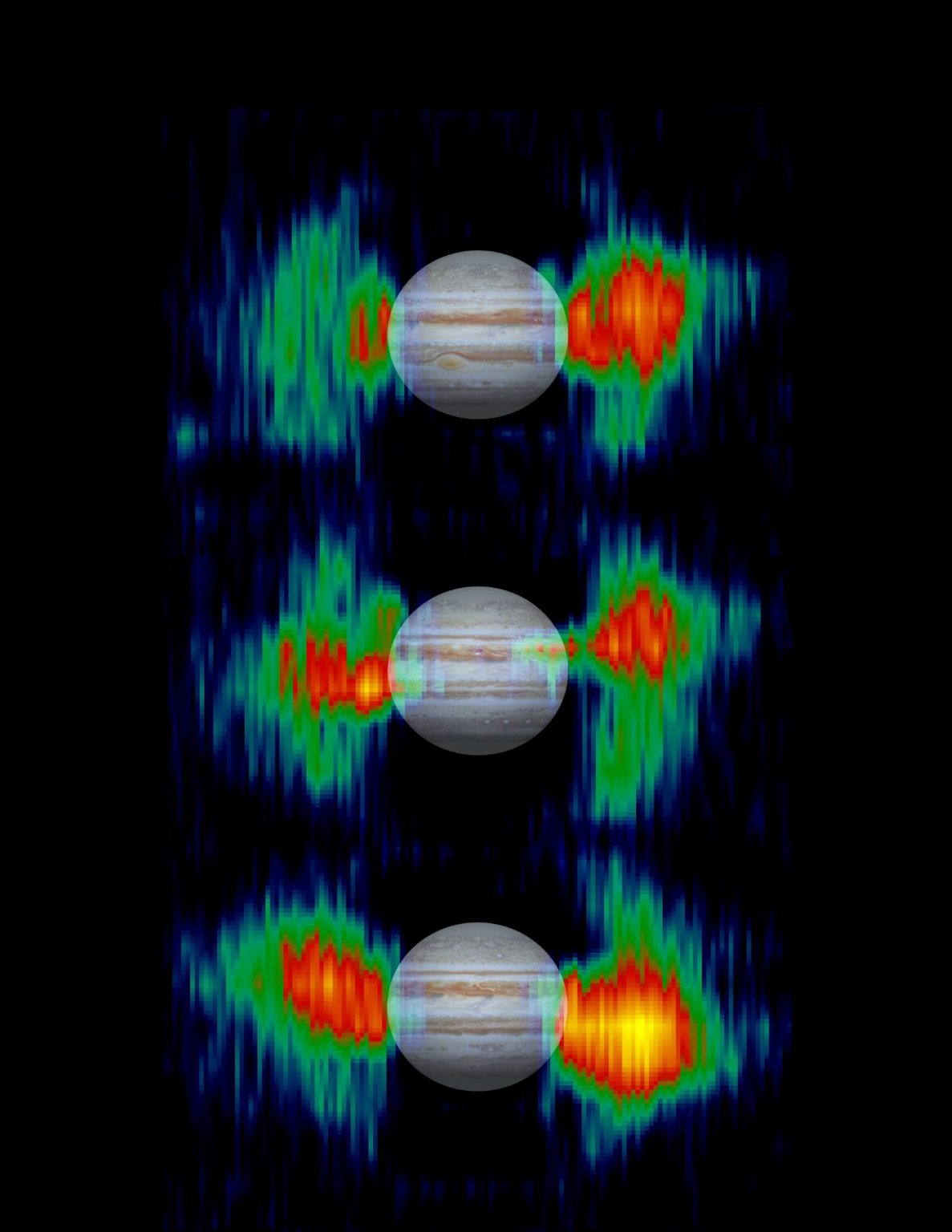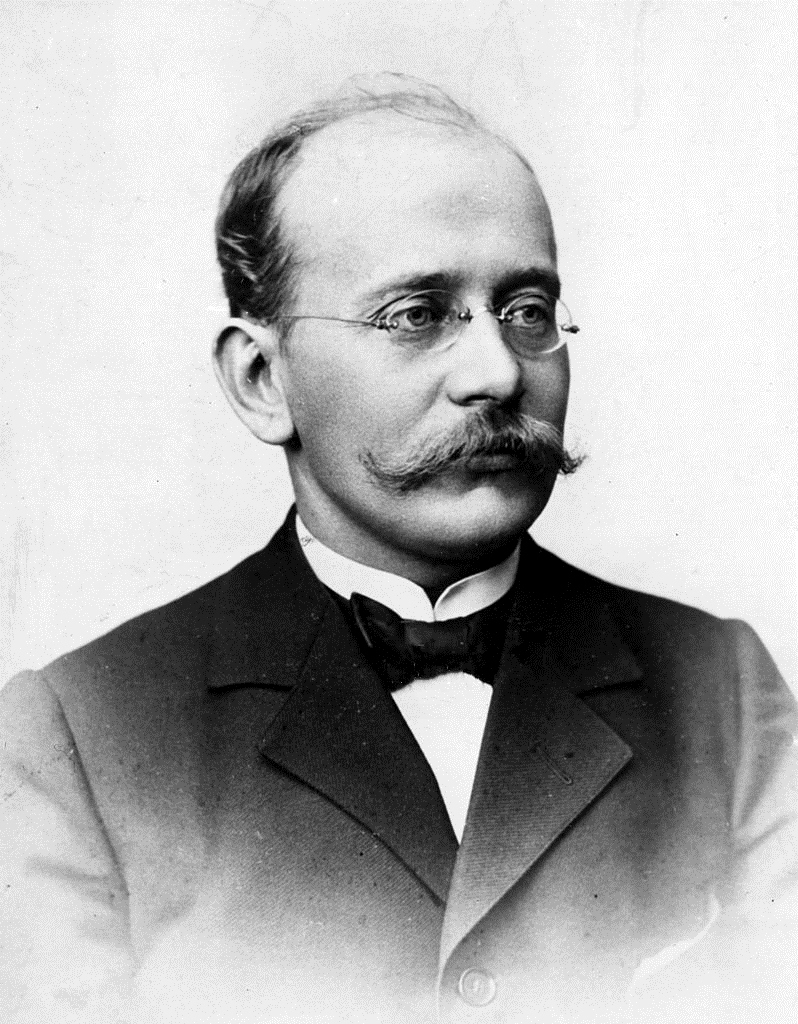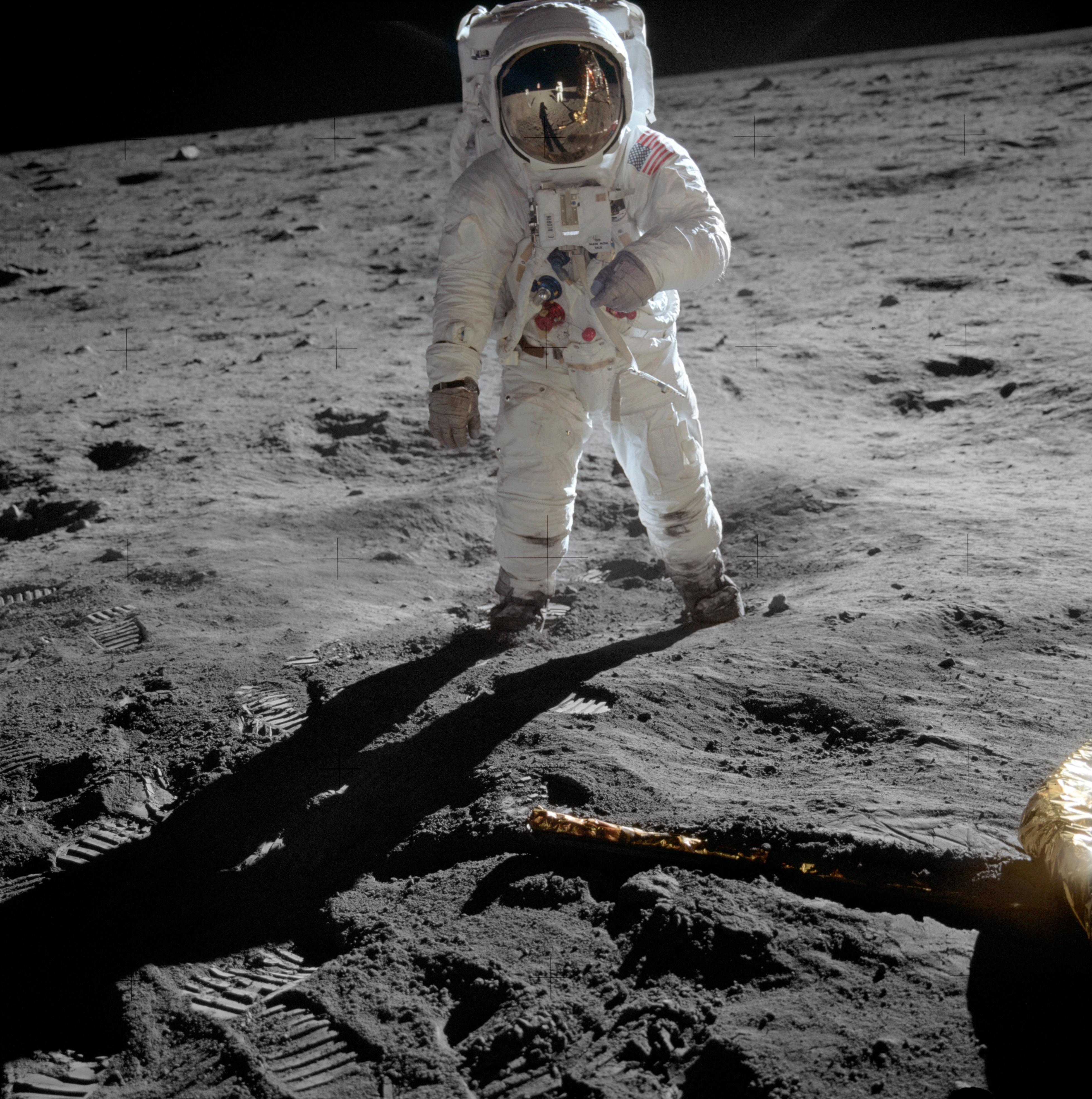|
Van Allen Belts
The Van Allen radiation belt is a zone of energy, energetic charged particles, most of which originate from the solar wind, that are captured by and held around a planet by that planet's magnetosphere. Earth has two such belts, and sometimes others may be temporarily created. The belts are named after James Van Allen, who published an article describing the belts in 1958. Earth's two main belts extend from an altitude of about above the surface, in which region radiation levels vary. The belts are in the inner region of Earth's magnetic field. They trap energetic electrons and protons. Other nuclei, such as alpha particles, are less prevalent. Most of the particles that form the belts are thought to come from the solar wind while others arrive as cosmic rays. By trapping the solar wind, the magnetic field deflects those energetic particles and protects atmosphere of Earth, the atmosphere from destruction. The belts endanger satellites, which must have their sensitive componen ... [...More Info...] [...Related Items...] OR: [Wikipedia] [Google] [Baidu] |
HowStuffWorks
HowStuffWorks is an American commercial infotainment website founded by professor and author Marshall Brain, to provide its target audience an insight into the way many things work. The site uses various media to explain complex concepts, terminology, and mechanisms—including photographs, diagrams, videos, animations, and articles. The website was acquired by Discovery Communications in 2007, but was sold to Blucora in 2014. The site has since expanded out into podcasting, focusing on factual topics. In December 2016, HowStuffWorks, LLC became a subsidiary of OpenMail, LLC, later renamed System1. In 2018, the podcast division of the company, which had been spun-off by System1 under the name Stuff Media, was acquired by iHeartMedia for $55 million. History In 1998, then North Carolina State University instructor Marshall Brain (1961–2024), started the site as a hobby. In 1999, Brain raised venture capital and formed HowStuffWorks, Inc. In March 2002, HowStuffWorks wa ... [...More Info...] [...Related Items...] OR: [Wikipedia] [Google] [Baidu] |
Explorer 3
Explorer 3 (Harvard designation 1958 Gamma) was an American artificial satellite launched into medium Earth orbit in 1958. It was the second successful launch in the Explorer program, and was nearly identical to the first U.S. satellite Explorer 1 in its design and mission. Background Explorer 3 was the third satellite in the Explorer small satellite series, which started with Explorer 1, America's first artificial satellite. The Explorer program was a direct successor to the Army Ballistic Missile Agency (ABMA)'s Project Orbiter, initiated in November 1954 to use a slightly modified Redstone missile combined with solid-propellant rocket cluster upper stage to put a satellite into orbit. In 1955, the "Stewart Committee", under the chairmanship of Homer J. Stewart of Jet Propulsion Laboratory (JPL), chose a Naval Research Laboratory (NRL) satellite plan using a rocket based on its Viking rocket (Project Vanguard) for the International Geophysical Year, which would start 1 J ... [...More Info...] [...Related Items...] OR: [Wikipedia] [Google] [Baidu] |
Explorer 1
Explorer 1 was the first satellite launched by the United States in 1958 and was part of the U.S. participation in the International Geophysical Year (IGY). The mission followed the first two satellites, both launched by the Soviet Union during the previous year, Sputnik 1 and Sputnik 2. This began a Space Race during the Cold War between the two nations. Explorer 1 was launched on 1 February 1958 at 03:47:56 GMT (or 31 January 1958 at 22:47:56 Eastern Time) atop the first Juno I booster from LC-26A at the Cape Canaveral Missile Test Center of the Atlantic Missile Range (AMR), in Florida. It was the first spacecraft to detect the Van Allen radiation belt, returning data until its batteries were exhausted after nearly four months. It remained in orbit until 1970. Explorer 1 was given Satellite Catalog Number 00004 and the Harvard designation 1958 Alpha 1, the forerunner to the modern International Designator. Background The U.S. Earth satellite program began in 1954 as ... [...More Info...] [...Related Items...] OR: [Wikipedia] [Google] [Baidu] |
Sergei Vernov
Sergei Nikolaevich Vernov (11 July 1910 – 26 September 1982) was a Russian-Soviet physicist who pioneered the study of primary cosmic rays. He examined cosmic rays initially with high altitude balloons, then with ground observatories and then in space and found patterns in the distribution of ions in latitudinal belts and radiation belts at varying altitudes. Although he was the first to identify these radiation belts, they are better known in the Anglophone scientific world through the work of James van Allen and termed as Van Allen Radiation Belts. Early life and education Vernov was born in Sestroretsk, where his father Nikolai Stepanovich, worked in the postal department and his mother Antonina was a mathematics teacher. He graduated from the Leningrad Polytechnic Institute in 1931 and joined the Radium Institute where he began to study cosmic rays using radiosondes. He continued these studies and worked on his doctorate under D.V. Skobeltsyn and S.I. Vavilov at the Lebed ... [...More Info...] [...Related Items...] OR: [Wikipedia] [Google] [Baidu] |
Sputnik 2
Sputnik 2 (, , ''Satellite 2'', or Prosteyshiy Sputnik 2 (PS-2, , ''Simplest Satellite 2'', launched on 3 November 1957, was the second spacecraft launched into Earth orbit, and the first to carry an animal into orbit, a Soviet space dog named Laika. Launched by the Soviet Union via a modified R-7 intercontinental ballistic missile, Sputnik 2 was a cone-shaped capsule with a base diameter of that weighed around , though it was not designed to separate from the rocket core that brought it to orbit, bringing the total mass in orbit to . It contained several compartments for radio transmitters, a telemetry system, a programming unit, a regeneration and temperature-control system for the cabin, and scientific instruments. A separate sealed cabin contained the dog Laika. Though Laika died shortly after reaching orbit, Sputnik 2 marked another huge success for the Soviet Union in The Space Race, lofting huge payload for the time, sending an animal into orbit, and, for the fir ... [...More Info...] [...Related Items...] OR: [Wikipedia] [Google] [Baidu] |
Nicholas Christofilos
Nicholas Constantine Christofilos (; December 16, 1916 – September 24, 1972) was a Greece, Greek physicist. The Christofilos effect, a type of electromagnetic shielding, is named after him. Career Christofilos was born in Boston, Massachusetts and raised in Greece. He attended the National Technical University of Athens at age 18, and graduated with a degree in Electrical and Mechanical Engineering in 1938. He remained in Greece during World War II, working for an Athens elevator maintenance company during the German occupation. He later initiated his own elevator company. During all of this, he maintained an amateur interest in accelerator physics and high-energy particle physics, and studied German and American texts concerning the subjects extensively. During 1946 he independently developed ideas for a synchrotron and in 1949 he conceived the strong focusing, strong-focusing principle for particle accelerators. Rather than publishing in a journal he submitted a patent a ... [...More Info...] [...Related Items...] OR: [Wikipedia] [Google] [Baidu] |
Carl Størmer
Fredrik Carl Mülertz Størmer () (3 September 1874 – 13 August 1957) was a Norwegian mathematician and astrophysicist. In mathematics, he is known for his work in number theory, including the calculation of and Størmer's theorem on consecutive smooth numbers. In physics, he is known for studying the movement of charged particles in the magnetosphere and the formation of aurorae, and for his book on these subjects, ''From the Depths of Space to the Heart of the Atom''. He worked for many years as a professor of mathematics at the University of Oslo in Norway. A crater on the far side of the Moon is named after him. Personal life and career Størmer was born on 3 September 1874 in Skien, the only child of a pharmacist Georg Ludvig Størmer (1842–1930) and Elisabeth Amalie Johanne Henriette Mülertz (1844–1916). His uncle was the entrepreneur and inventor Henrik Christian Fredrik Størmer. Størmer studied mathematics at the Royal Frederick University in Kristia ... [...More Info...] [...Related Items...] OR: [Wikipedia] [Google] [Baidu] |
Kristian Birkeland
Kristian Olaf Bernhard Birkeland (born 13 December 1867 – 15 June 1917) was a Norway, Norwegian space physics, space physicist, inventor, and professor of physics at the University of Oslo, Royal Fredriks University in Oslo. He is best remembered for his theories of atmospheric electric currents that elucidated the nature of the aurora borealis. In order to fund his research on the aurorae, he invented the Coilgun, electromagnetic cannon and the Birkeland–Eyde process of nitrogen fixation process, fixing nitrogen from the air. Birkeland was nominated for the Nobel Prize seven times. Life and death Birkeland was born in Christiania (Oslo today) to Reinart Birkeland and Ingeborg (née Ege) and wrote his first scientific paper at the age of 18. Birkeland married Ida Charlotte Hammer in May 1905. They had no children and, due to Birkeland's preoccupation with his work, they divorced in 1911. Suffering from severe paranoia due to his use of barbital as a sleeping aid, he died und ... [...More Info...] [...Related Items...] OR: [Wikipedia] [Google] [Baidu] |
Van Allen Probes
The Van Allen Probes, formerly known as the Radiation Belt Storm Probes (RBSP), were two robotic spacecraft that were used to study the Van Allen radiation belts that surround Earth. NASA conducted the Van Allen Probes mission as part of the Living With a Star program. Understanding the radiation belt environment and its variability has practical applications in the areas of spacecraft operations, spacecraft system design, mission planning and astronaut safety. The probes were launched on 30 August 2012 and operated for seven years. Both spacecraft were deactivated in 2019 when they ran out of fuel. They are expected to deorbit during the 2030s. Overview NASA's Goddard Space Flight Center manages the overall Living With a Star program of which RBSP is a project, along with Solar Dynamics Observatory (SDO). The Johns Hopkins University Applied Physics Laboratory (APL) was responsible for the overall implementation and instrument management for RBSP. The primary mission was schedul ... [...More Info...] [...Related Items...] OR: [Wikipedia] [Google] [Baidu] |
Apollo Program
The Apollo program, also known as Project Apollo, was the United States human spaceflight program led by NASA, which Moon landing, landed the first humans on the Moon in 1969. Apollo followed Project Mercury that put the first Americans in space. It was conceived in 1960 as a three-person spacecraft during President Presidency of Dwight D. Eisenhower, Dwight D. Eisenhower's administration. Apollo was later dedicated to President John F. Kennedy's national goal for the 1960s of "landing a man on the Moon and returning him safely to the Earth" in an address to United States Congress, Congress on May 25, 1961. It was the third American human spaceflight program to fly, preceded by Project Gemini conceived in 1961 to extend spaceflight capability in support of Apollo. Kennedy's goal was accomplished on the Apollo 11 mission when astronauts Neil Armstrong and Buzz Aldrin landed their Apollo Lunar Module (LM) on July 20, 1969, and walked on the lunar surface, while Michael Collins ( ... [...More Info...] [...Related Items...] OR: [Wikipedia] [Google] [Baidu] |
Satellite
A satellite or an artificial satellite is an object, typically a spacecraft, placed into orbit around a celestial body. They have a variety of uses, including communication relay, weather forecasting, navigation ( GPS), broadcasting, scientific research, and Earth observation. Additional military uses are reconnaissance, early warning, signals intelligence and, potentially, weapon delivery. Other satellites include the final rocket stages that place satellites in orbit and formerly useful satellites that later become defunct. Except for passive satellites, most satellites have an electricity generation system for equipment on board, such as solar panels or radioisotope thermoelectric generators (RTGs). Most satellites also have a method of communication to ground stations, called transponders. Many satellites use a standardized bus to save cost and work, the most popular of which are small CubeSats. Similar satellites can work together as groups, forming constellatio ... [...More Info...] [...Related Items...] OR: [Wikipedia] [Google] [Baidu] |







